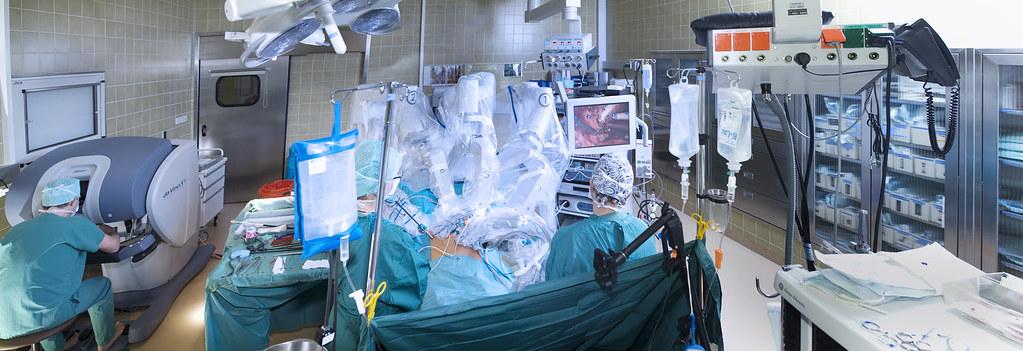Georgetown’s Italian Research Institute highlighted the intersection of technology and health care at “Medical Robotics and Robotics Surgery”: a speaker event held Sept. 18.
The event, a collaboration between Georgetown University and the Embassy of Italy in Washington, D.C., featured presentations by Paolo Dario, a professor of biomedical robotics at the Scuola Superiore Sant’Anna in Pisa, Italy, and Dr. Keith Kowalczyk, physician executive director of MedStar Health Urology and chair of the MedStar Robotic Surgery Service Line.
The Italian Research Institute was established in 2013 as part of the College of Arts & Sciences to share and facilitate Italian research in a variety of disciplines such as science, literature, international affairs and the arts.
Marco Gilli, science counselor of the Italian Embassy, moderated the event. Gilli said that medical and surgical robots are at the forefront of scientific innovation, emphasizing that advancements in medical robotics rely on collaborative research across multiple industries.
“It is a truly interdisciplinary topic, combining biology, medicine, engineering, and robotics,” Gilli said.
Dario’s presentation, “Science and Engineering in Medical Robotics: From Aspirations to Reality,” highlighted multisector partnerships in the field of artificial bionic limbs. Dario explained that by developing robotic hands and arms, his work has allowed many amputees to regain movement in their limbs. He described one case where a Brazilian amputee regained arm functionality after Dario fitted him with a bionic hand capable of receiving signals from the brain.
“This guy, the person who was implanted, was able to recognize objects with his brain by using an artificial hand and sensors,” Dario said.
Dario said that in the field of engineering, pursuing seemingly unfeasible ideas is essential for innovation. He argued that the development of medical robots is necessarily as creative and ambitious as the construction of the Santa Maria del Fiore Cathedral, one of Italy’s largest churches.

Kowalczyk’s presentation, “A Brief History of Surgical Robotics: Evolution and Impact,” showed that ambitious projects have been done in surgical robotics, too. Kowalczyk highlighted life-saving technologies for the operating room and summarized the history of surgical robots, which spans from the U.S. Department of Defense’s use of remote-controlled telesurgery on military bases to specialized surgical robots sold by private sector corporations.
Kowalczyk, who specializes in robot-assisted urologic surgery, discussed the implementation of surgical robotics in prostatectomies. The procedure, which involved the surgical removal of a male’s prostate gland, was a notoriously dangerous and often life-threatening procedure throughout the early-to-mid 20th century. However, Kowalczyk noted that when the FDA approved the use of da Vinci robots for prostatectomies, the procedure became much safer for patients, thanks to the robots’ incredible surgical precision and three-dimensional visibility.
“This slowly became the standard of care,” Kowalczyk said. “We went from life-threatening bleeding to almost no blood loss, less than 1% of patients needing a blood transfusion.”
Today, the da Vinci robot is the only FDA-approved surgical machine, and approximately 80% of prostatectomies are performed using some form of a robotic model in the United States. However, Kowalczyk also addressed concerns regarding the cost and benefit of surgical robots. He shared that, with an average price of $2.2 million dollars and an average lifespan of only 10 years, surgical robots are an expensive investment for hospitals–especially when considering the limited amount of data on the long-term benefits for patient outcomes.
“We have learned a lot of lessons: mostly, to be cautious with technology, especially with huge costs,” Kowalczyk said. “Always, when you are a physician, patient outcomes need to drive future innovation, not the other way around.”
For Kowalczyk and Dario, future innovations in medical and surgical robotics will rely on the imaginations of up-and-coming researchers. When it comes to developing new robots, Dario said that the power of engineering will enable physicians and scientists to turn visionary ideas into real-world technologies.
“I am talking about reality, but also about dreams, because engineering is about dreaming. ”








